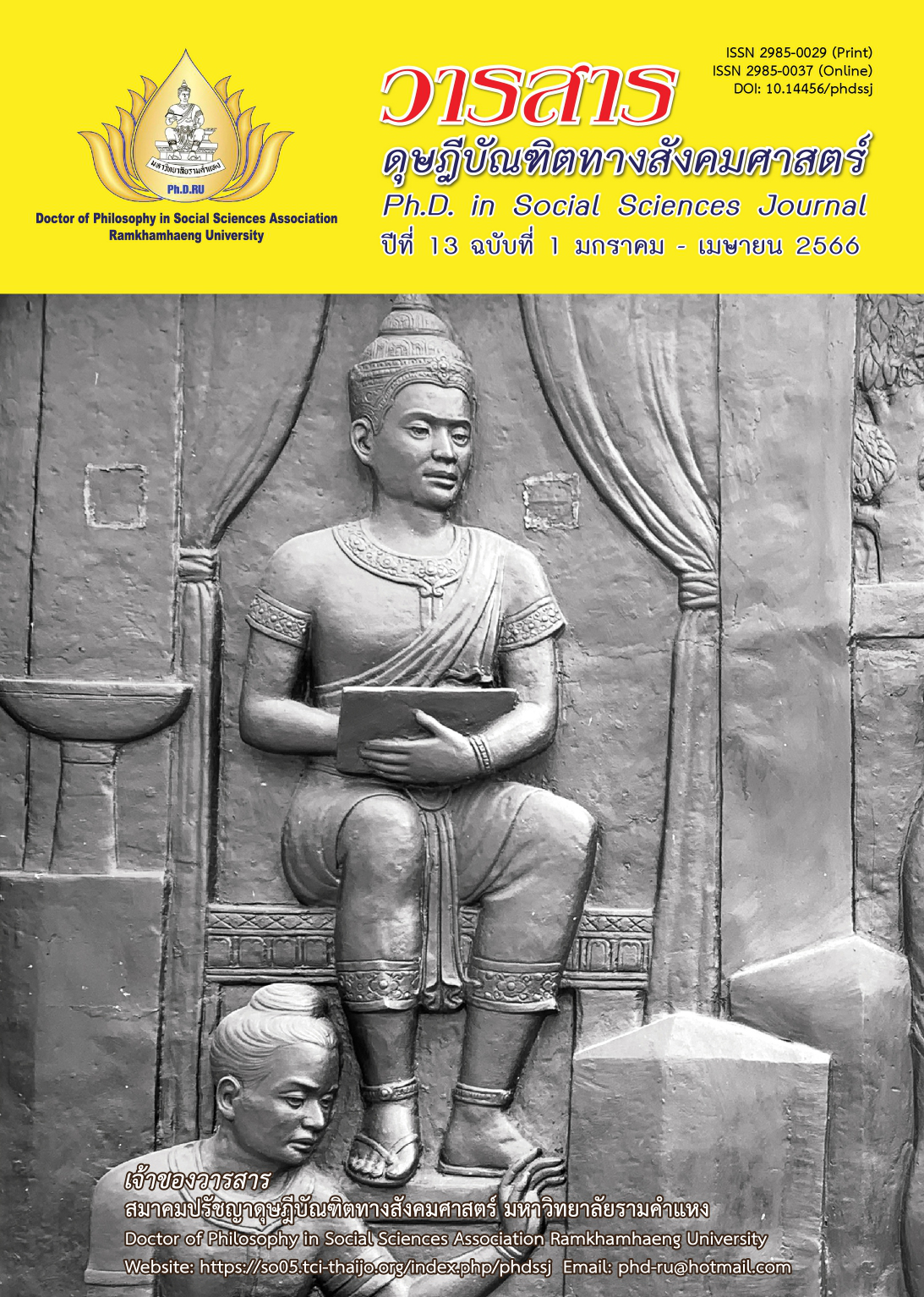Synthesis of Components for Value Creation in Social Enterprises
Main Article Content
Abstract
This research article aims (1) to study the components of value-added business for social enterprise and (2) to examine the empirical coherence of the component structure of value-added business for social enterprise. This research is quantitative research. Collect data with a specific sample. Data were collected from a total of 200 samples size. The tool used online questionnaires from the Google Forms system (Google Forms). The data were analyzed using mean analysis, exploratory factor analysis, and confirmatory factor analysis.
The results of the research reveal that: of mean value creation found that the group using creativity or research process made the product unique had the highest mean at 4.22 and the standard deviation at 0.64, followed by your product, meet the customer’s needs with a mean of 4.05 and a standard deviation of 0.64. The third place is that the product is different from other manufacturers, with a mean of 4.04. When analyzing the factor analysis, the results found that all four questions met the minimum criteria of an element weight greater than 0.50, and when the confirmatory factor analysis found that, the conformity index was a good fit. (Chi-square = 1.29, df = 1, p-value = 0.056, RMSEA = 0.027)
Article Details

This work is licensed under a Creative Commons Attribution-NonCommercial-NoDerivatives 4.0 International License.
Academic articles, research articles, and book reviews in the Ph.D. in Social Sciences Journal are author’s opinions, and not the publisher’s, and is not the responsibility of the Ph.D. in Social Sciences Journal Philosophy Association, Ramkhamhaeng University. (In the case that research is done on human, the researcher has to be trained in Ethics for Doing Research on Human Training and has to produce the evidence of the training).
References
Chatthama, K. (2015). A study of value-added approach in hostel development in Bangkok. Master’s Thesis of Architecture, Thammasat University. [In Thai]
Chummee, P., & Chanprasert, S. (2021). A causal relationship model analysis of innovations affecting value added creation of social business. Turkish Journal of Computer and Mathematics Education, 12(14), 5866-5871.
Chanakankorn, K., Toyama, M., & Suvanvihok, V. (2021). Factors affecting innovation and total factor productivity of the paper packaging industry in Thailand. Sukhothai Thammathirat Open University Journal, 34(1), 32-48. [In Thai]
Gunday, G., Ulusoy, G., Kilic, K., & Alpkan, L. (2011). Effects of innovation types on firm performance. International Journal of Production Economics, 133(2), 662-676.
Hair, J. F., Black, W. C., Babin, B. J., Anderson, R. E., & Tatham, R. L. (2006). Multivariate Data Analysis (6th ed.). Pearson.
Hoyle, R. H., & Kenny, D. A. (1999). Statistical power and tests of mediation. In R. H. Hoyle (Ed.), Statistical strategies for small sample research. Sage.
Jacobsen, L. F., Stancu, V., Wang, Q. J., Aschemann-Witzel, J., & Lähteenmäki, L. (2021). Connecting food consumers to organisations, peers, and technical devices: The potential of interactive communication technology to support consumers’ value creation. Trends in Food Science & Technology, 109, 622-631.
King Mongkut’s University of Technology Thonburi. (2017). Instruction manual for the development of teaching and learning management projects and extracurricular activities on entrepreneurship: Social entrepreneurship course. Author. [In Thai]
Maejo University. (2010). Important of social enterprise. Retrieved from http://www.bablog. mju.ac.th/jamnian/wp-content/uploads/2010/08/SE.pdf [In Thai]
Monroe-White, T., & Zook, S. (2018). Social enterprise innovation: A quantitative analysis of global patterns. Voluntas: International Journal of Voluntary and Nonprofit Organizations, 29, 496-510.
Nuryakin, N. (2018). Mediating effect of value creation in the relationship between relational capabilities on business performance. Contaduría y Administración, 63(1), 1-21.
Ohio University. (2021). The four types of innovation that add value to your business. Retrieved from https://www.creativityatwork.com/2016/12/02/how-you-can-benefit-from-business-innovation
Pongnaras, N., Klinraren, k., & Siriwong, P. (2017). The application of innovation for creating value added and study the channel of distribution of SUMALEE brand, Nong Hua Reat District, Nong Bunmak amphoe, Nakhon Ratchasima province. In Proceeding of the RMU Graduate Research Conference 2nd (GRC2017) (pp. 93-106). Rajabhat Maha Sarakham University. [In Thai]
Prasitrathasin, S. (2008). The analysis techniques of variable for sciences research and behavioral science: Principles method and application (6th ed.). Samlada. [In Thai]
Sangkaman, S. (2016). Research report value creation for processed rice products: A case study of Yasothon province. Chulalongkorn University, Social Research Institute [In Thai]
Schermelleh-Engel, K., Moosbrugger, H., & Müller, H. (2003). Evaluating the fit of structural equation models: Tests of significance and descriptive goodness of-fit measures. Methods of Psychological Research Online, 8(2), 23-74.
Somkeatkun, W., & Ruengdet, K. (2017). The creating added value for Chaiya Native Rice in Chaiya district, Surat Thani province. Research and Development Journal Loei Rajabhat University, 16(56), 31-42. [In Thai]
Sutthinarakorn, S., Yanprechaset, Y., Paiwithayasiritham., C., & Sungrugsa, N. (2019). Value creation of products and management innovation of community enterprise. Dusit Thani College Journal, 13(1), 270-283. [In Thai]


